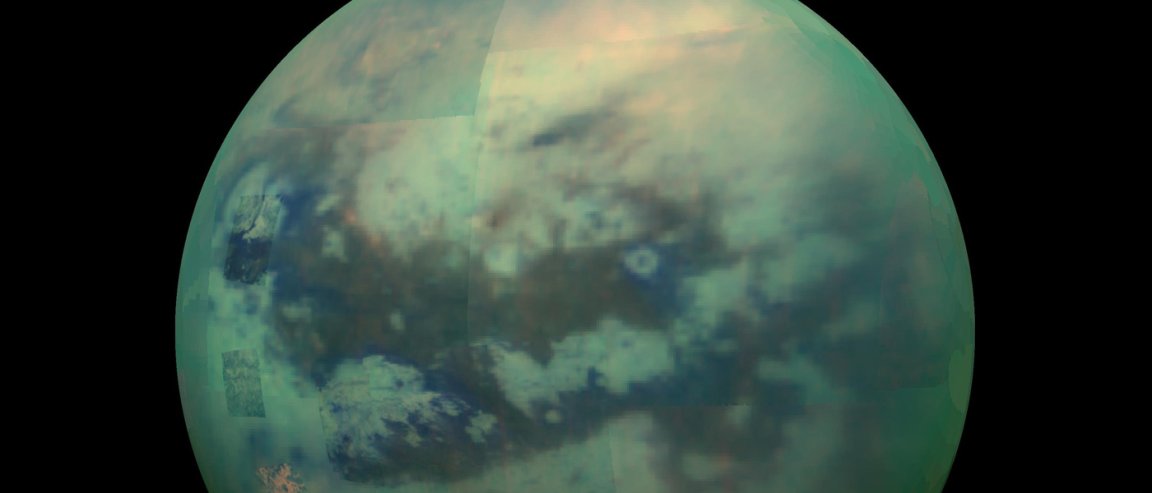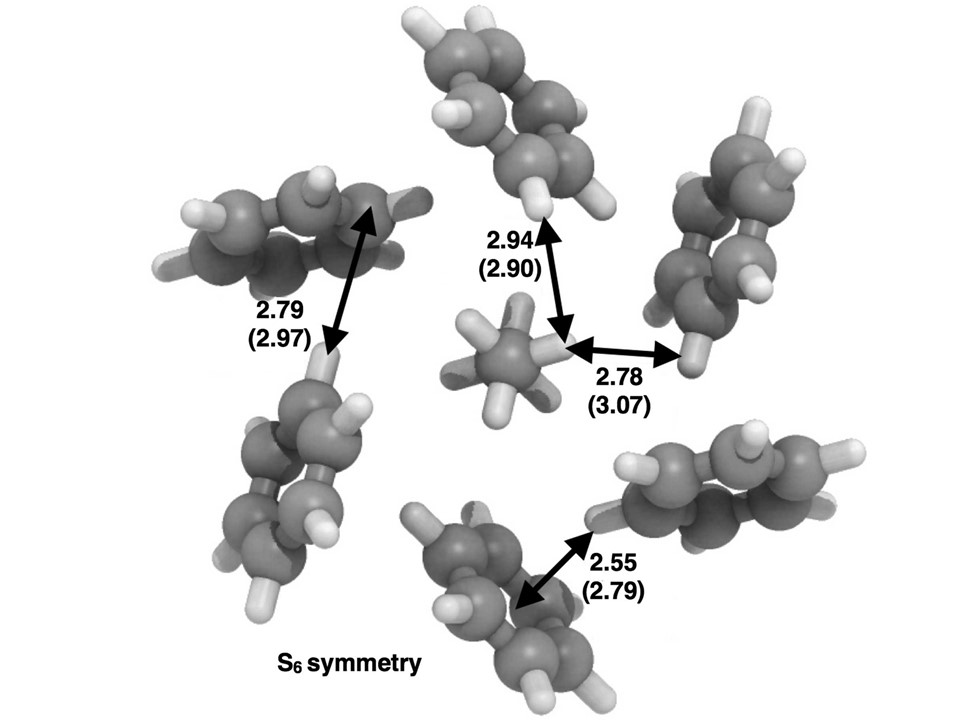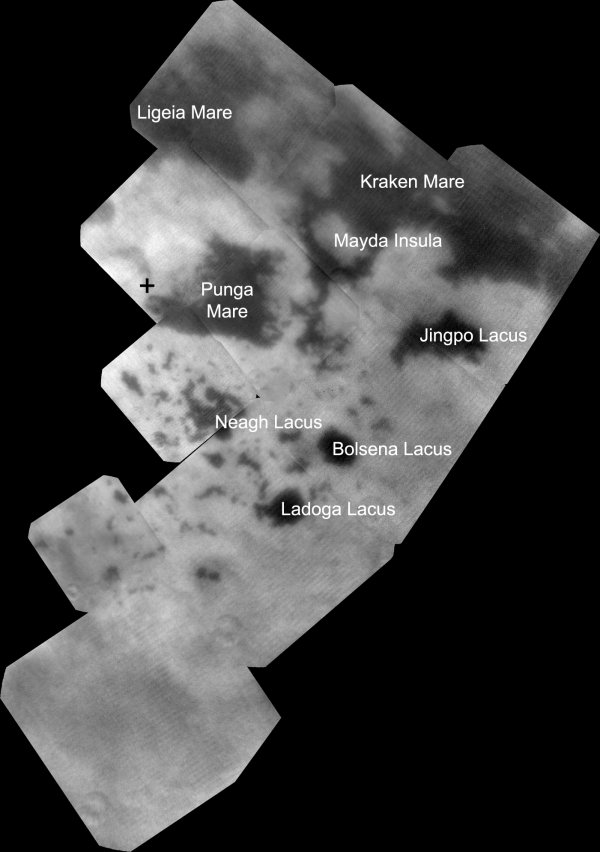
New Material on Titan
Titan, Saturn’s largest moon, is a very weird world. Space probes have found many unusual things on its surface—like ice mountains and “magic islands.” Now, research here on Earth is showing us some more of the amazing things present on this alien surface.
A researcher from the Australian Nuclear Science and Technology Organisation (ANSTO) has used the Australian Synchrotron to investigate the possible atomic structure of a new material only found naturally on the surface of Titan. It is a “co-crystal” (essentially, a crystalline structure composed of two or more molecular compounds) that exists between benzene and ethane and that forms at -179.2 °C (-290.56 °F). And that is the almost unimaginably cold surface temperature of Titan.
The benzene molecules of the material form a ring that surrounds ethane molecules in a highly symmetric geometry. The benzene molecules actually form a channel, and the ethane molecules occupy this channel.
What makes the molecule weird is that the bonds between the benzene molecules are formed between hydrogen atoms at the edges of the molecule and π-bonds in the middle. This sort of bond is not possible in terrestrial conditions, and may be as strong as hydrogen bonds in ice.
The material is likely the evaporite of Titan—it is what is left after Titan’s methane lakes dry up, analogous to the salt flats of Earth.

A Very Smelly World
Like our own planet, Titan possesses a kind of water cycle, or at least as fair an approximation as can be found in the outer Solar System. But instead of water, the cycle is driven by methane and ethane—a kind of “hydrocarbonic” cycle.

There are large subsurface oceans of methane and ethane underneath Titan. It forms large clouds of both compounds that rain methane and ethane onto Titan’s icy surface. This rain collects into methane and ethane lakes on the surface.
The material found is likely an important part of this cycle. When lakes dry up on Earth, you are left with mixtures of salts and hydrates, called evaporite. If the lakes evaporated on Titan, what would be left is this benzene-ethane co-crystal.
Working out the different materials on Titan’s surface helps explain the sometimes puzzling surface features observed there.
The material was first identified by scientists at the Jet Propulsion Laboratory in the US, but its structure was only determined using the Australian Synchrotron. And it represents a fascinating addition to our knowledge of the geochemical processes at work elsewhere in the Solar System.
“We used to think the water-based hydrological cycle on Earth was unique, but we now have evidence of cycles on other bodies, like Pluto, most recently,” says Helen Maynard-Casely of ANSTO, lead researcher of the new study.